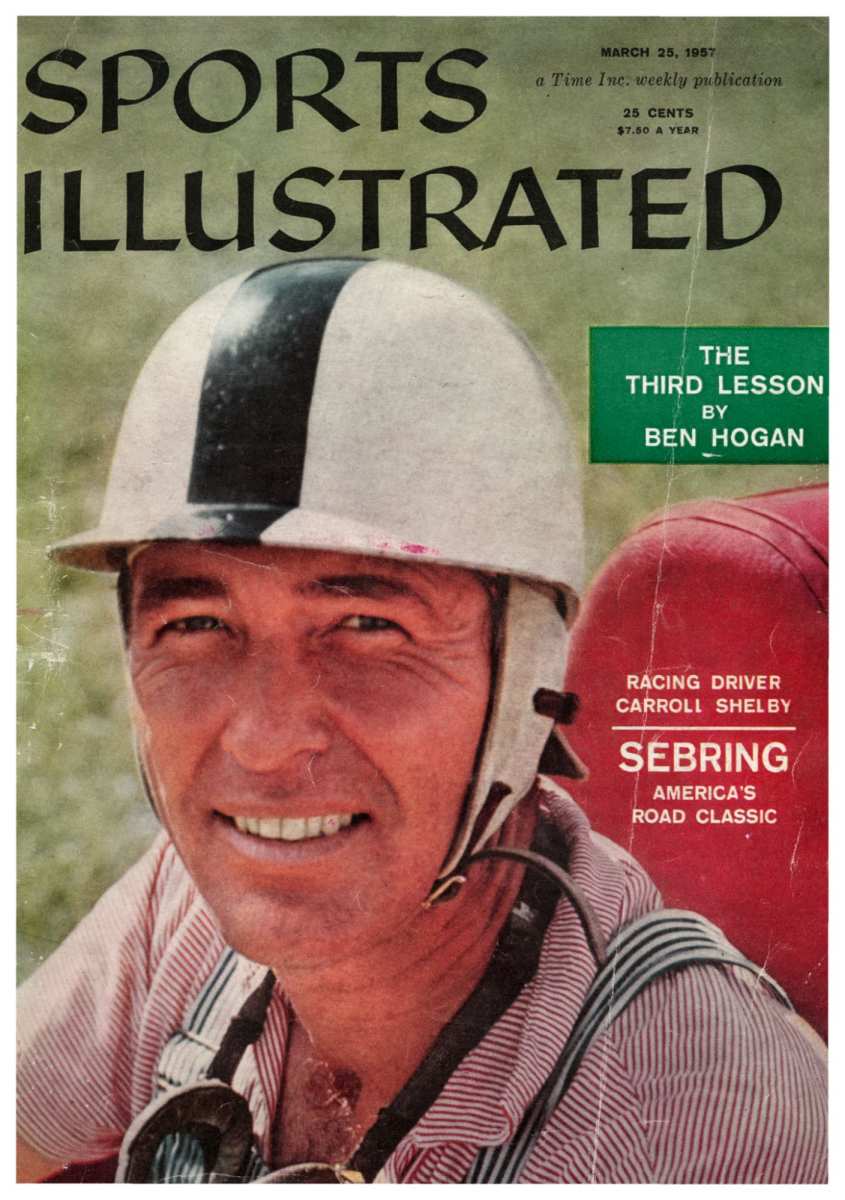SI:AM | March Gets Madder as Two No. 1 Seeds Fall
Good morning, I’m Dan Gartland. That was a fantastic night of sports.
If you’re reading this on SI.com, you can sign up to get this free newsletter in your inbox each weekday at SI.com/newsletters.
The men’s tournament is wide open now
Who would have guessed that after the first day of Sweet 16 play there would be only one No. 1 seed left standing in the men’s tournament?
After Gonzaga’s loss to Arkansas and Arizona’s loss to Houston last night, Kansas is the last top seed still alive. (The Jayhawks play Providence tonight for a spot in the Elite Eight.) It was the first time since 1995 that two No. 1 seeds went down on the same day in Sweet 16 play.
The Zags’ defeat was the more surprising of the two. They entered the tournament as the No. 1 overall seed, boasting a team that featured both experienced veterans (like Drew Timme and Andrew Nemhbard) and a potential No. 1 draft pick in Chet Holmgren. Arkansas, meanwhile, needed to grind out a 53–48 win over No. 12 seed New Mexico State in the last round. The Razorbacks played a good game, but they also benefited from some really lousy officiating. Holmgren fouled out after playing just 23 minutes and scoring 11 points. His fifth foul came on an extremely soft call with 3:29 remaining and Gonzaga trailing by just six. But with Holmgren on the bench, the Bulldogs couldn’t mount a comeback.
Houston beating Arizona was an upset, but not a complete shocker. Ken Pomeroy’s statistical formula ranks the Cougars as the No. 2 team in the country (behind Gonzaga) and they lived up to their reputation last night. They led wire-to-wire on the way to winning 72–60, thanks to some smothering defense.
In the other two games of the night, Duke eked out a close win over Texas Tech and Villanova got past Michigan. That sets up tomorrow night’s Elite Eight games, with Villanova facing Houston in the first game and Arkansas against Duke in the second. The Cougars’ impressive showing last night has them favored over the higher-seeded Villanova in that matchup.
The best of Sports Illustrated
Ahead of their Sweet 16 game tonight, today’s Daily Cover (by Kevin Sweeney) about Saint Peter’s, of course:
“From significant budget constraints to repeated flooding in the basketball offices to swimmers in Speedos walking through the visiting locker room on game days, the stories from the last decade paint a picture of a program that has had to overcome plenty to get into this remarkable position, where it will play Purdue on Friday for what would be an unprecedented spot in the Elite Eight.”
Brian Straus was in Mexico City, where the USMNT battled to a draw with Mexico in World Cup qualifying. … Gonzaga’s loss may be the bigger story, but let Pat Forde tell you about Arkansas coach Eric Musselman’s improbable trip to the Elite Eight. … Greg Bishop wrote about how Collin Gillespie became Villanova’s heart and soul. … Alex Prewitt spoke with Steve DeBerg, who, until Tom Brady surpasses him next season, is the oldest quarterback to start an NFL game.
Around the Sports World
Devin Booker scored 49 points as the Suns locked up the top seed in the West. … A second grand jury in another Texas county declined to indict Deshaun Watson. … Ray Allen was fined by a Florida judge for skipping jury duty to attend Kevin Garnett’s jersey retirement ceremony in Boston. … Trevor Story’s contract with the Red Sox was reportedly endangered by his initial refusal to get the COVID-19 vaccine. … The Buccaneers now have two players named after the same two NBA legends. … Reliever Andrew Miller is retiring after 16 seasons in the majors.
The top five...
… plays from yesterday:
5. This towering home run by 20-year-old Mets prospect Francisco Álvarez (a consensus top-10 prospect in all of baseball)
4. Gio Reyna’s long run through the Mexican defense
3. Andrew Nembhard’s off-balance three to give Gonzaga hope late in the game
2. Panthers goalie Spencer Knight’s diving stick save
1. Aleksandar Trajkovski’s goal for North Macedonia to knock Italy out of the World Cup
And a bonus from today in Australia: Lance “Buddy” Franklin became just the sixth player in Australian Football League history to score 1,000 goals, and the crowd stormed the field to celebrate in the middle of the game.
SIQ
Hall of Fame pitcher Tom Glavine was born on this day in 1966. I think most people know that Glavine, who grew up outside Boston, was also an excellent hockey player who was selected in the 1984 NHL draft, but which round did he get picked in?
- Second
- Fourth
- Sixth
- Eighth
Check Monday’s newsletter for the answer.
Yesterday’s SIQ: What was the final score of the longest game in NHL history (116 minutes and 30 seconds) between the Red Wings and Montreal Maroons in March 1936?
Answer: 1–0. Yes, the game was scoreless for three regulation periods and five (10-minute) overtimes before Mud Bruneteau finally broke the drought.
The game began at 8:30 p.m. and didn’t end until 2:25 a.m., when Bruneteau, a rookie who had scored just two goals all season, took advantage of a Montreal turnover and beat goalie Lorne Chabot.
Detroit’s goalie was Normie Smith, who stopped an estimated 92 shots that night (shots on goal were not officially tracked) and reportedly lost 12 pounds over the course of the game.
Overtime periods were only 10 minutes long at that time and wouldn’t be extended to 20 minutes until the 1948 playoffs. So when Game 4 of the Oilers–Jets first-round series went to three overtimes last year, they almost broke Detroit and Montreal’s record for longest game ever. Kyle Connor scored for the Jets 6:52 into the third overtime, about 10 minutes faster than Bruneteau’s goal.
From the Vault: March 25, 1957

If you’ve ever seen the movie Ford v Ferrari, you’ll be familiar with the name Carroll Shelby. Matt Damon played Shelby in the film about the battle between the American and Italian auto manufacturers as they fought to win the 1966 24-hour race at Le Mans.
Nine years before that, Kenneth Rudeen profiled Shelby for Sports Illustrated, tracing his need for speed back to his upbringing in rural East Texas and his time flying planes during World War II. After the war, he started racing cars, which was even more of a daredevil activity then than it is now.
Shelby narrowly avoided getting caught up in a crash in Northern Ireland in 1955 that killed two other drivers. The year before, he was racing in Mexico when he was involved in a serious crash.
“I guess I got smart-alecky. I started driving too fast, trying to catch up with the leaders, and flipped on a curve,” he told Rudeen. “It was just a lucky thing that I happened to go off at a place where there was a wall along the road, because the mountain went straight down. The wall stopped the car. I shattered my right elbow in the wreck. It didn’t hurt too much at the time; I guess I was in shock. But I had to lie there beside the road for six hours until all the cars went by.”
The broken elbow couldn’t keep Shelby out of the driver’s seat, though. He continued to race by having his doctor put his arm in a special cast when he drove.
“My regular doctor had put a plaster of Paris cast on my arm. When I’d drive, I’d have another doctor cut off that cast and put on a lighter one,” he explained. “I’d put my hand on the steering wheel, and then he'd slap on a quick-drying cast made of something like Fiberglas. I paid for it, though. They had to take a bone out of my leg to rebuild my elbow. That’s why my golf isn’t so good any more.”
Shelby was forced to retire from racing in 1960 due to a heart issue but went on to have a successful career as a designer of sports cars. He died in 2012 at 89.
Check out more of SI’s archives and historic images at vault.si.com.
